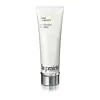What's inside
What's inside
 Key Ingredients
Key Ingredients

 Benefits
Benefits

 Concerns
Concerns

 Ingredients Side-by-side
Ingredients Side-by-side

Glycerin
HumectantPotassium Myristate
EmulsifyingSodium Methyl Cocoyl Taurate
CleansingPotassium Laurate
EmulsifyingPotassium Behenate
CleansingGlycol Distearate
EmollientPEG-150 Distearate
EmulsifyingPotassium Palmitate
EmulsifyingCocamide Mea
EmulsifyingMagnesium Aluminum Silicate
AbsorbentPotassium Stearate
CleansingHydroxyethylcellulose
Emulsion StabilisingButylene Glycol
HumectantPyrus Malus Peel Extract
AntioxidantPetrolatum
EmollientCyclomethicone
EmollientDimethiconol
EmollientSodium Hyaluronate
HumectantGlycyrrhiza Glabra Root Extract
BleachingPropylene Glycol
HumectantGentiana Lutea Extract
EmollientCamellia Sinensis Leaf Extract
AntimicrobialPhospholipids
Skin ConditioningPEG-60 Hydrogenated Castor Oil
EmulsifyingTrisodium EDTA
Benzyl Alcohol
PerfumingParfum
MaskingImidazolidinyl Urea
PreservativePhenoxyethanol
PreservativeMethylparaben
PreservativePropylparaben
PreservativeTitanium Dioxide
Cosmetic ColorantCI 17200
Cosmetic ColorantAloe Barbadensis Sprout
HumectantWater
Skin ConditioningGlycerin, Potassium Myristate, Sodium Methyl Cocoyl Taurate, Potassium Laurate, Potassium Behenate, Glycol Distearate, PEG-150 Distearate, Potassium Palmitate, Cocamide Mea, Magnesium Aluminum Silicate, Potassium Stearate, Hydroxyethylcellulose, Butylene Glycol, Pyrus Malus Peel Extract, Petrolatum, Cyclomethicone, Dimethiconol, Sodium Hyaluronate, Glycyrrhiza Glabra Root Extract, Propylene Glycol, Gentiana Lutea Extract, Camellia Sinensis Leaf Extract, Phospholipids, PEG-60 Hydrogenated Castor Oil, Trisodium EDTA, Benzyl Alcohol, Parfum, Imidazolidinyl Urea, Phenoxyethanol, Methylparaben, Propylparaben, Titanium Dioxide, CI 17200, Aloe Barbadensis Sprout, Water
Water
Skin ConditioningButyrospermum Parkii Nut Extract
EmollientC13-15 Alkane
SolventCaprylic/Capric Triglyceride
MaskingPolysorbate 60
EmulsifyingMacadamia Integrifolia Seed Oil
Skin ConditioningSorbitan Oleate
EmulsifyingCetyl Alcohol
EmollientBorago Officinalis Seed Oil
EmollientStearic Acid
CleansingCarbomer
Emulsion StabilisingPalmitic Acid
EmollientCoco-Glucoside
CleansingAllantoin
Skin ConditioningHydroxyacetophenone
AntioxidantCoconut Alcohol
EmollientBisabolol
Masking1,2-Hexanediol
Skin ConditioningCaprylyl Glycol
EmollientDipotassium Glycyrrhizate
HumectantPolyacrylamide
Sodium Benzoate
MaskingSodium Hydroxide
BufferingC13-14 Isoparaffin
EmollientParfum
MaskingTocopherol
AntioxidantHelianthus Annuus Seed Oil
EmollientCitric Acid
BufferingLaureth-7
EmulsifyingSodium Chloride
MaskingAlpha-Isomethyl Ionone
PerfumingBenzyl Salicylate
PerfumingWater, Butyrospermum Parkii Nut Extract, C13-15 Alkane, Caprylic/Capric Triglyceride, Polysorbate 60, Macadamia Integrifolia Seed Oil, Sorbitan Oleate, Cetyl Alcohol, Borago Officinalis Seed Oil, Stearic Acid, Carbomer, Palmitic Acid, Coco-Glucoside, Allantoin, Hydroxyacetophenone, Coconut Alcohol, Bisabolol, 1,2-Hexanediol, Caprylyl Glycol, Dipotassium Glycyrrhizate, Polyacrylamide, Sodium Benzoate, Sodium Hydroxide, C13-14 Isoparaffin, Parfum, Tocopherol, Helianthus Annuus Seed Oil, Citric Acid, Laureth-7, Sodium Chloride, Alpha-Isomethyl Ionone, Benzyl Salicylate
Alternatives
Ingredients Explained
These ingredients are found in both products.
Ingredients higher up in an ingredient list are typically present in a larger amount.
Parfum is a catch-all term for an ingredient or more that is used to give a scent to products.
Also called "fragrance", this ingredient can be a blend of hundreds of chemicals or plant oils. This means every product with "fragrance" or "parfum" in the ingredients list is a different mixture.
For instance, Habanolide is a proprietary trade name for a specific aroma chemical. When used as a fragrance ingredient in cosmetics, most aroma chemicals fall under the broad labeling category of “FRAGRANCE” or “PARFUM” according to EU and US regulations.
The term 'parfum' or 'fragrance' is not regulated in many countries. In many cases, it is up to the brand to define this term.
For instance, many brands choose to label themselves as "fragrance-free" because they are not using synthetic fragrances. However, their products may still contain ingredients such as essential oils that are considered a fragrance by INCI standards.
One example is Calendula flower extract. Calendula is an essential oil that still imparts a scent or 'fragrance'.
Depending on the blend, the ingredients in the mixture can cause allergies and sensitivities on the skin. Some ingredients that are known EU allergens include linalool and citronellol.
Parfum can also be used to mask or cover an unpleasant scent.
The bottom line is: not all fragrances/parfum/ingredients are created equally. If you are worried about fragrances, we recommend taking a closer look at an ingredient. And of course, we always recommend speaking with a professional.
Learn more about ParfumWater. It's the most common cosmetic ingredient of all. You'll usually see it at the top of ingredient lists, meaning that it makes up the largest part of the product.
So why is it so popular? Water most often acts as a solvent - this means that it helps dissolve other ingredients into the formulation.
You'll also recognize water as that liquid we all need to stay alive. If you see this, drink a glass of water. Stay hydrated!
Learn more about Water